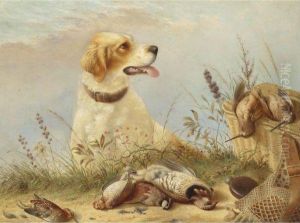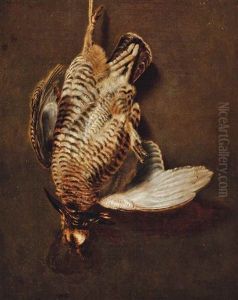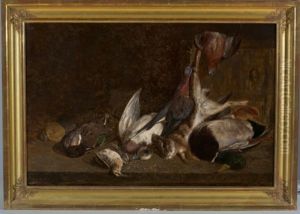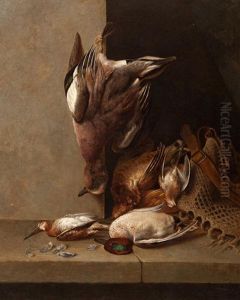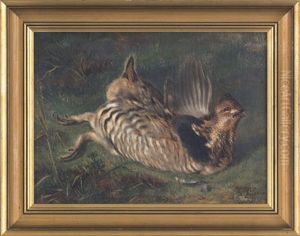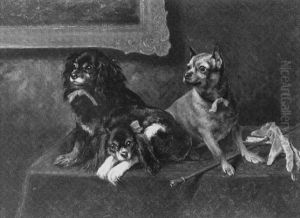Henry Dutton Morse Paintings
Henry Dutton Morse, often known as H.D. Morse, was an American painter born in 1836. Specializing primarily in portraiture, Morse developed a reputation for his skillful representations of individuals, capturing both the likeness and essence of his subjects. Unfortunately, Morse is not one of the most widely recognized artists today, and information about his life and career remains relatively obscure when compared with the giants of American art history.
Morse's life spanned the turbulent times of the American Civil War and the subsequent Reconstruction era. During this period, the United States was undergoing significant social, political, and economic changes. It was also a time of rapid development in the arts, with American artists seeking to establish a distinct artistic identity separate from European influences.
Although not much detailed information is readily available regarding Morse's artistic training or influences, it is known that during the 19th century, many American artists either trained at home with established painters or traveled to Europe to study in the art capitals of their time, such as Paris and Rome. Morse would have been part of a generation of artists that contributed to the shaping of American art in the late 19th century, a period that saw the emergence of various art movements and schools.
Over the course of his career, Morse's works would have been displayed in exhibitions and salons, the primary venues for artists to showcase their work. As a portrait artist, Morse's clientele would have included prominent figures of his time, as well as wealthy patrons who sought to have their likenesses captured for posterity.
Henry Dutton Morse passed away in 1898. While he may not have achieved enduring fame like some of his contemporaries, Morse's contributions to the American art scene of the 19th century would have been part of the broader tapestry of cultural and artistic developments during an important era in United States history. Today, Morse's works, if they are held in public collections or have come up in art auctions, serve as historical documents that offer insights into the aesthetics and societal figures of his time.
